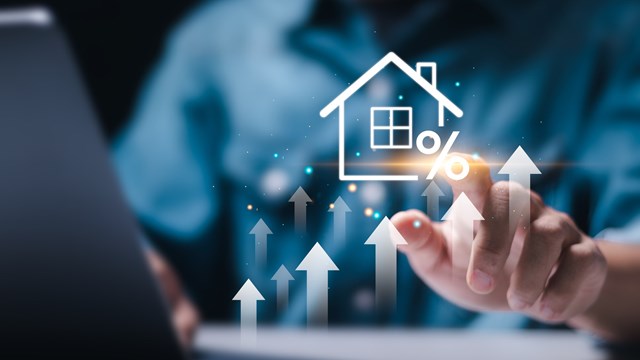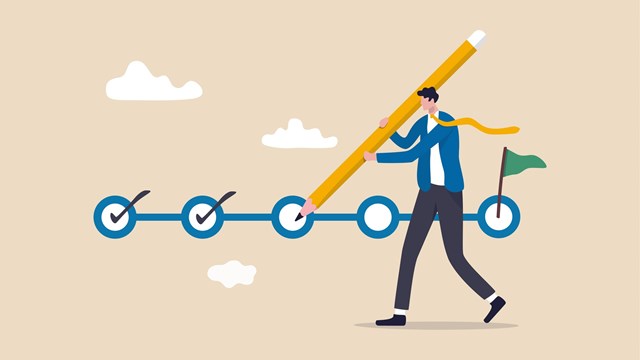The downtown Manhattan real estate market has gone though a series of ups and downs in past years, but clearly, nothing in recent memory has affected it as drastically as the September 11 terrorist attacks. The aftereffects of the attacks on the World Trade Center have reverberated in the months since, disrupting the lives of those already living in Lower Manhattan and raising questions about the area's future. Early assumptions were that most people would leave and move to other parts of Manhattan or get out of the city altogether. But that mass exodus many were expecting never really happened, and in the time since the attack, realtors and real estate brokers have seen the market change dramatically. So what did happen, and where is the market now?
According to Veronica Raehse of the downtown offices of Bellmarc Realty, "The cycle has been extreme and drastic. Last year it was much slower. But September 11 brought things to a grinding halt." Raehse points out that the closer to Ground Zero properties were, the more profound the change immediately after the attacks. The market began to pick up around November however, when Raehse believes it was about 80 percent of normal. By December, sales activity was back to 100 percent of normal, and by January, it surged to 110 to 120 percent of normal. February and March saw an astounding 150 percent of normal activity. "It was frenzied and out of control," says Raehse. By April, sales slowed a tad, edging back to 120 percent of normal.
According to Raehse, "Anyone with property on the market on September 11 who remained a motivated seller after the attack immediately did a price reduction of five to 15 percent. I haven't seen this happen in years." Sellers and owners closest to the ruins, such as those in Battery Park City, hunkered down to wait if they didn't have to sell right away. The Battery Park City market was slower to rebound. According to Raehse, the areas in close proximity to Ground Zero lagged about four to five weeks behind the pace of the rest of the market, says Raehse.
The price reductions and low interest rates fueled the November purchase increase. According to Jim Gricar, managing director of the Corcoran Group, "The market was in full force in January. In November and December, potential buyers felt prices in downtown areas might be discounted." By January, however, there was such a frenzy and people no longer wanted to wait for prices to go down - instead, they were wary of prices on the rise. Currently, says Gricar, "Prices are at or exceed last April's levels." Inventory is still low, however.
Now, according to Raehse, the age-old agony of New York City real estate is back: there are too many buyers and not enough product. "A good apartment priced right might receive seven to ten bids at an open house. A property can come on the market and in three to five days, it's gone," says Raehse. While many people are holding on to what they have, however, there have also been reports of apartment owners selling their property in favor of renting again. While the appeal of a less entrenched commitment might appeal to some, this doesn't seem to be the order of the day.
Gricar concurs, saying that many people are choosing to hold "˜em rather than fold "˜em. He says that the people downtown who held on to their property rather than sell is characteristic of the downtown way of thinking. "There was a collective "˜let's wait and see if it comes back'," says Gricar.
Douglas Wagner, president of Benjamin James Real Estate, agrees that the market is very active right now. "The market is robust citywide. The first wave of sales was made up largely of people looking to capitalize on low prices ... [but] there was never a surplus in vacancies." Wagner did note that there was some initial sell-off in Battery Park City and lower TriBeCa. In terms of finding the least expensive prices, buyers were heading to Battery Park City, where a one bedroom could be found for under $300,000. Wagner gives the example of a 650 square-foot Battery Park City apartment going for $285,000, normally the price of a studio.
Wagner feels the market will return quickly, as new construction is also thriving. "Condo and loft areas are still very coveted," he points out. Buyers are still trying to "get in while it's still a deal," says Wagner. He adds that whether or not a purchaser got a "deal" won't truly be seen until about three to five years from now.
Roberta Benzillio, executive vice president and manager of the Greenwich Village brokerage office of William B. May - who also happens to live in Battery Park City - says, "People see the value [of the properties]." She agrees that many are trying to find a good deal while they're still able to, although many prices are back up to where they were before September 11.
Properties introduced a length of time after September 11 have fared well. Gricar cites the example of the condos at the Sugar Warehouse on 79 Laight Street in TriBeCa. "Sales have been brisk, and it's the hottest building downtown right now," he says.
Joyce West, director of sales at Charles Greenthal Realty, notes that there is still a lot of building occurring. New construction that was shelved after the attacks has now been picked up again. Initially, building projects all over the city were questionable. "People didn't want to sink money into something that wasn't going to be lived in," she says.
West adds that many peoples' health concerns have been eased somewhat by the ongoing environmental testing being carried out downtown by government agencies - inconclusive as the results may yet be. Since Sept. 11, West says, "Demand is rising. [The market is] not quite as active, but getting there." She has noticed that people are looking for properties under market price as compared to other areas. "Comparable space can be five to ten percent less than other areas," says West.
Says Benzillio, "Prices are not climbing, although the market is very strong. They are not being driven higher by the volume of people, but the demand is causing deals to get done quickly." She has seen a few apartments sell for more than the asking price, but this is not the norm.
While most of the people who have purchased or who are looking to purchase property downtown are interested mostly in the location and culture of the area, the monetary incentives from the Lower Manhattan Development Corp. (LMDC) don't hurt. The downtown area has been broken into three zones:
Zone One includes areas south of Chambers Street, West of Nassau or Broad Street, and all of Battery Park City. Residents who live in this area are eligible for a grant of 30 percent of their monthly mortgage payments, plus maintenance fees and taxes. The amount is capped at $12,000 paid over two years, with a minimum grant of $4,000 over the two-year period.
Zone Two includes the areas outside of Zone One, South of Canal Street and Rutgers Street. These residents are also eligible for 30 percent of their mortgage payments, maintenance fees, and taxes. However, this grant is not to exceed $6,000 over two years, with a minimum grant of $2,000.
Zone Three includes areas North of Canal Street, south of Delancy and Kenmore, and east of Lafayette Street. These residents, along with the residents of Zones One and Two, are eligible for a one-time grant of $1,000 per unit.
To be eligible, owners who presently live in the areas must agree to remain in their homes for at least two years after the program begins. New owners are eligible if they purchase after the start date of the program and before May 31, 2003. They must also remain in these residences for a minimum of two years. An owner must also actually live in the unit - he or she is ineligible for the grant if the unit is rented out to someone else.
Incentives are working, though Raehse believes they are not the primary reason that buyers are so attracted to the area. "It's not fueling the market. It isn't substantial enough," she says, noting that $12,000 is not a huge savings when compared to many of the property values.
So why is the downtown area in such demand? "It has much to do with the attitude," says Raehse. "While the initial reaction of some was to leave, many people decided they loved the area and wanted to stay." Those who held their property either stayed there, or moved uptown. Others chose to move to Greenwich Village in order to keep proximity to their former neighborhoods.
Buyers also see the downtown market as an investment opportunity. In times of a volatile stock market, people don't want to put their money in stocks, yet they still want to invest in something. As a result, many are turning to real estate as an investment option. Low interest rates have encouraged all types of people to buy.
Gricar observes that, "A lot of people want to live downtown, specifically below Canal Street. New York City is a place where people still want to be." Even those from the Upper East and Upper West sides are looking to move downtown.
James thinks all of the attention focused on Lower Manhattan has been encouraging. "People want the area to succeed," he says. "It is a hub of commerce and culture, and has to be the nation's leader."
"Customers are proceeding without trepidation," says James. "It's a kind of pioneering spirit."
Benzillio echoes that sentiment. "People want to be supportive. They have a die-hard attitude." She also points out that people moving downtown are searching for different products that cannot be found elsewhere in the city. For example, prospective buyers are interested in the unique architecture found downtown.
"Judging by the market, September 11 is no longer utmost in people's minds," says West. People are no longer afraid to live on high floors of tall buildings, and their questions and concerns have less to do with terrorism than with finding the right property.
"Things are getting back to normal," says Benzillio. "There's less inconvenience. Psychologically, people are thinking better."
"Most people want to go back," says West, summing up why New York City is still the greatest city in the world: "People are not interested in living anywhere else."






Leave a Comment